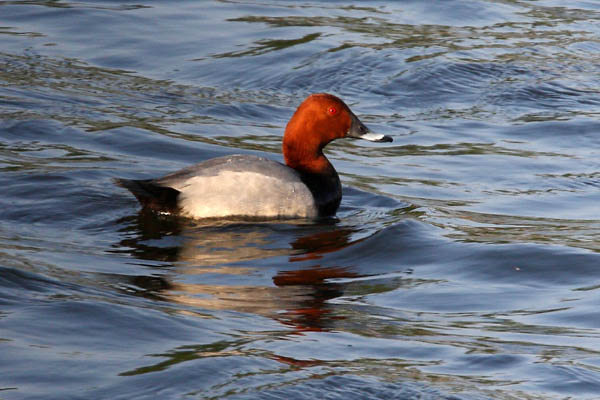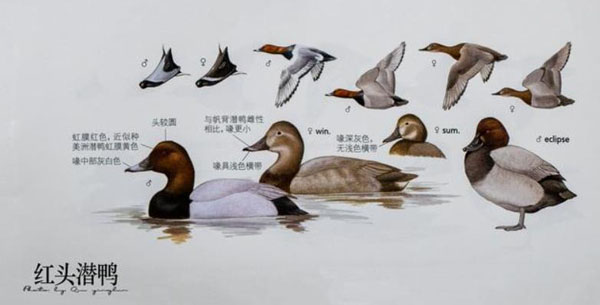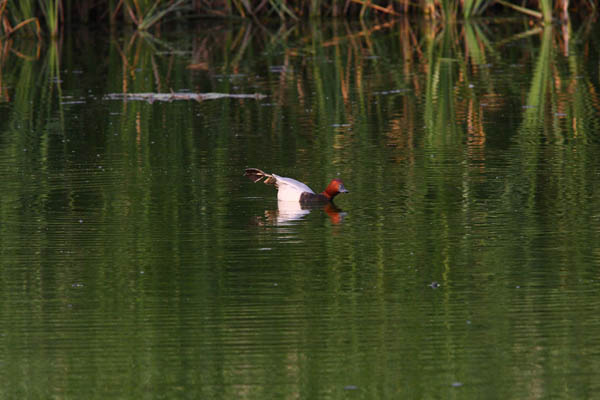Aythya ferina
IUCN
LCBasic Information
Scientific classification
- name:Aythya ferina
- Scientific Name:Red-headed duck, sandpiper, sandpiper,Aythya ferina,Common Pochard,Pochard,Northern Pochard
- Outline:Waterfowl
- Family:Anseriformes Anatidae Duckling
Vital signs
- length:42-49cm
- Weight:700-1100g
- lifetime:10years
Feature
It rarely sings and is a deep-water bird that is good at diving by folding its wings.
Distribution and Habitat
In China, it breeds in the northwest of Xinjiang. During migration, it can be found in the entire western, central, northeastern and eastern China. It winters in the Yellow River, Yangtze River and waters to the south, including Taiwan Island. Abroad, it breeds in Eurasia from Western Europe to Central Asia and winters in North Africa and South Asia.
It inhabits rivers, swamps, ponds and lakes with dense aquatic plants. During the non-breeding season, it often gathers in large groups of hundreds or even thousands of individuals, often mixed with other diving ducks.
Appearance
The male is medium-sized, with chestnut-red head and neck, black chest, upper back and tail coverts, and gray wings, flanks and lower abdomen. The female is brown all over, with gray-brown back, gray flanks and lower body. It is similar to the sail-backed duck, but the top of the head is flat and the front part is red instead of black. The iris of the male is red, and the female is gray-brown, both with leathery yellow eye rings, gray-black beak with black tip, and gray-black feet.
Details
Commonly seen in open waters with reeds and good cover, they live in open lakes and reservoirs during the winter. They often form small groups of 10-30 or mixed groups with Crested Pochards, Shovelers, etc. They often move in groups, especially in large groups during the migration season and winter. Sometimes they also mix with other ducks. They mostly move and swim in open waters during the day, or sleep motionlessly floating on the water surface, and sometimes rest in groups on the shore. They are timid and alert. They are good at diving. They often dive to feed or escape from enemies. They can also take off directly from the water in times of crisis. They fly quickly, but have difficulty walking on the ground.

Mainly forages by diving in deep water, and often dives into the water with its head down and its tail up to feed in shallow water near the shore like other ducks. The food mainly consists of algae, leaves, stems, roots and seeds of aquatic plants. Sometimes it also goes to the shore to forage for grass and grass seeds. In spring and summer, it also forages for animal food such as mollusks, crustaceans, aquatic insects, small fish and shrimps. It forages mostly in waters rich in aquatic plants or with good concealment conditions. It often forages at dusk and early morning. At noon, it often floats on the open water to rest or sleep.

Red-headed Pochards begin to migrate northward in mid-to-late March in spring, arriving in the Northeast from early to mid-April, and begin to migrate southward in early October in autumn, arriving in the southern wintering grounds from late October to early November. A few stay in the Northeast for the winter.

The breeding season is from April to June. Usually pairs are formed during the winter. But some pairs are formed as late as during the spring migration or after arriving at the breeding grounds. Nests are built on the ground in the reeds or three-edged grass by the water, and some nests are built on floating objects in the reeds. Each nest lays 6-9 eggs, usually 8. The newly laid eggs are light blue-green, and then turn into dirty olive color. The size of the eggs is 50-64×40-49 mm, with an average of 58.2×47.0 mm, and weighs 59-69 grams, with an average of 65 grams. The female bird incubates the eggs. The incubation period is 24-26 days. The male bird leaves the female bird after the female bird starts incubating the eggs. The female bird incubates the eggs and raises the chicks alone. The chicks mature late.








